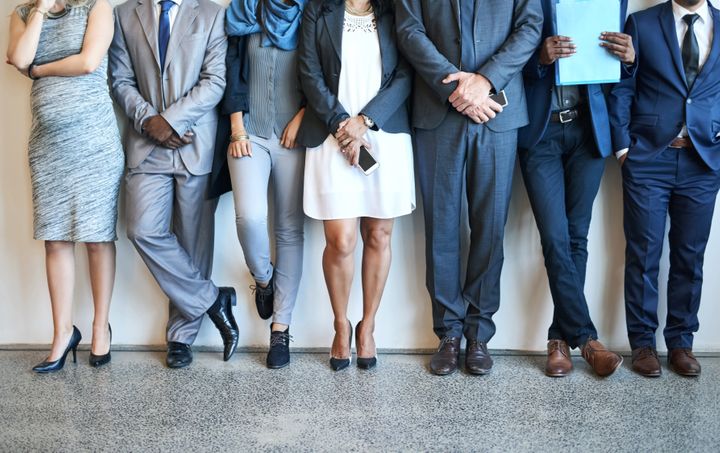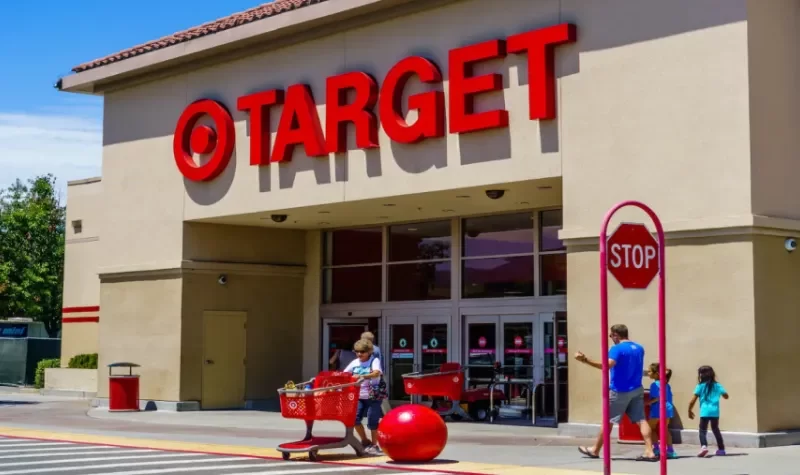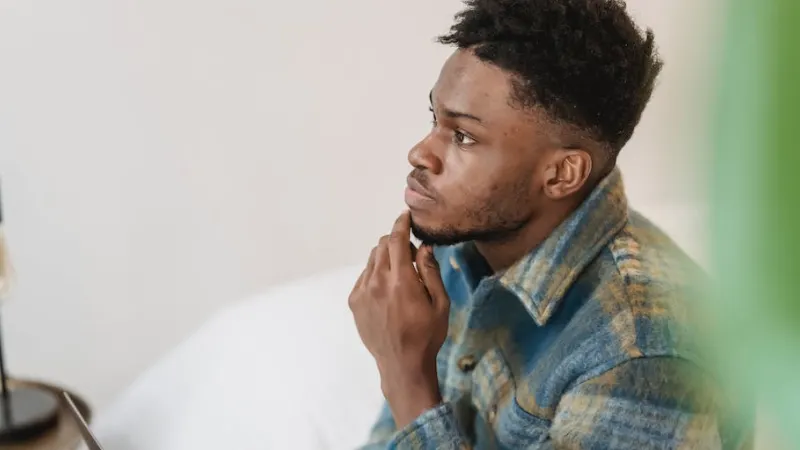Finding out what not to wear to an interview is a crucial component of securing your dream job. No matter how well the interview goes, you may be at a disadvantage if you have a poor first impression due to your choice in clothing. On the other hand, choosing the appropriate interview attire is crucial because a good first impression can greatly influence how an employer views you as a candidate.
In this article, we’ll go over 12 wardrobe dos and don’ts for interviews, as well as advice on what to wear and preparation strategies.
For more information, continue reading.
Table of Contents
The Pros of Knowing What Not to Wear to An Interview
Knowing what not to wear to an interview has many benefits for job seekers. You can convey to an interviewer that you are taking the interview and the position seriously by dressing appropriately and professionally. Showing that you are meticulous and thoughtful, two traits that are important for many jobs, is another benefit of paying attention to details.
A lot of disappointment and confusion can be avoided by knowing what not to wear. You might, for instance, think that an interview went well and that you are a perfect fit for the job, only to find out later that you were unsuccessful. You might need to look at your interview attire after you’ve ruled out other possibilities like fierce competition or a lack of qualifications. Asking yourself the following questions can help you determine if you need some advice on what not to wear to your next interview:
- Did your attire adhere to the interviewer’s and the workplace’s general dress code?
- Did you feel at ease wearing that clothing?
- Did your appearance exude self-assurance in your abilities and responses?
Consider changing your interview attire if you provided a “no” response to any of these questions.
What Not to Wear to An Interview
Bright, Flashy Colors
When picking out attire for an interview, be cautious. Inappropriate clothing for a job interview includes short hemlines and plunging necklines. If an outfit is also in a vibrant, eye-catching color (like red), it will highlight the inadequacy of the attire.
Make sure your entire outfit serves as a counterbalance if you intend to wear a daring color. Otherwise, the colors will only serve to detract from the content of what you have to say during the interview. Consider donning a vivid red shirt with a black suit instead. Other, less dramatic hues also work well for professional interviews.
For video interviews, the same is true. Avoid stripes, very bright colors, and colors that are the same shade as your background.
A good idea is to stay away from skin-tight fits and extremely short hemlines altogether.
Dated Fashions
Everything matters, including your overall appearance, in a competitive job market. Invest in some current, fashionable clothing to wear to your interview if your wardrobe is outdated or if your closet reflects the fact that you haven’t worked in a while.
Also remember to remember your shoes. You won’t look polished or professional if you put on a pair of sneakers, worn-out pumps, or beat-up dress shoes. You don’t need to spend a lot of money on your wardrobe because you can find excellent pieces at major retailers like Target and Old Navy as well as budget retailers like TJ Maxx and Marshalls. The return on your shopping trip might astound you.
Heavy Perfume and Cologne
As you never know if your interviewer may have an allergy or aversion to strong scents, go easy on the cologne and perfume.
In either case, you don’t want your overpowering perfume or cologne application to be the first or last thing your interviewer notices about you.
Piles of Makeup
While it’s important to look your best, putting a lot of makeup on is not the best course of action. Avoid dark eyeshadow, vivid lipstick, and heavy foundation to maintain a natural appearance.
The best course of action is to stick with tinted lip balm, a thin layer of mascara, and a dash of powder. With minimal makeup, try to appear awake and refreshed.
Using the right makeup for an interview will help you look your best.
Wacky Or Novelty Ties
The novelty tie you received for Christmas last year is not appropriate for this situation. Even if you believe your tie will stand out, proceed with caution and stick with something more conventional.
It’s perfectly acceptable to wear a pattern with traditional colors, such as tasteful paisley or subdued stripes, but avoid trying to be the funny guy wearing the tacky tie.
Excessive Accessories
Avoid distracting jewelry and facial piercings, and keep your makeup simple.
It’s best not to be distracted by your jewelry, scent, or makeup when you’re interviewing as a woman. Make sure your watch or smartwatch’s alarm is off before entering if you have one. Instead of being remembered for fumbling to silence something while answering questions, you want to be remembered for your personality and professionalism.
You ought to limit (or do without) wearing perfume or cologne in terms of scent. A few spritzes of your signature scent may quickly become overpowering in small spaces where interviews are held. Additionally, you never know if an allergic person will be in your interview room. If in doubt, dress hygienically and with the least amount of perfume when attending an in-person interview.
Headwears
Avoid wearing hats, beanies, hoods, or earbuds while interviewing! None of these are appropriate and may be upsetting and distracting. You don’t want the recruiter to think you are disinterested in or not paying attention to what they are saying. Additionally, these might make you fidget and be distracting.
The only exception, of course, would be if you wear a head covering for religious or cultural reasons.
The company culture should be respected while still dressing to impress. 25 percent of recruiters say attire can positively impact their decision to hire a candidate. You want to make a good first impression, blend in, and have recruiters remember you favorably. Do your homework on the business, avoid wearing casual or flashy attire, and let your shoes match your outfit. Make a good first impression by choosing your clothing wisely!
Denim
Even though many workplaces permit employees to wear jeans, especially designer jeans in good condition, it is not advisable to wear denim to an interview. Denim suggests a level of informality that the potential employer might not approve of, at least not during the initial meeting.
Instead, put on a cozy pair of dress pants if you want to wear slacks. Look to see if they are clean, comfortable to sit in, and free of holes, stains, or frayed seams.
Mini Skirts Or Mini Dresses
Short skirts and dresses are also too informal for a professional setting. If you want to wear something other than pants, make sure it extends at least to your knees. Keep in mind that a skirt can become shorter while you are sitting down due to a few inches of ride-up. Even though you might be able to wear these if you get the job, it might be a good idea to make a more conservative first impression until you are more accustomed to the dress code expectations.
Read about: Can You Wear Jeans To An Interview?
T-shirts
T-shirts are typically not dressy enough for a job interview. Even with a blazer or cardigan on top, they may still appear ill-fitting, shabby, and, at worst, wrinkled. Excellent substitutes include a button-up shirt or a short-sleeved shirt made of a nice material, like silk. While a blazer or cardigan can add polish to an outfit, it’s important to check that the shirt underneath is clean and ironed in case you need to shed a layer if the interview room is warm.
Don’t Forget That Shoes Matter Too
A job interview is not the time to wear flip flops. Unless they are an open-toed dress sandal or high heel, sandals should generally be left at home. Instead, put on sensible shoes that go with your outfit; avoid anything flashy or outlandish. No distracting footwear, such as excessively high heels, brightly colored or outdated sneakers.
A job interview is also not the time to wear brand-new shoes! Recruiters will notice if you are limping or uneasy if you have blisters, which are awful.
Clothes That Don’t Fit Well
Uncomfortable clothing, whether it is too small or too large, can give the impression that you don’t care enough about the interview to put more effort into it. Try to always keep one or two tailored outfits on hand for interviews because first impressions are so important in a job interview. Have a stretchy or adjustable outfit on hand for the interview if your clothing size fluctuates.

How to Dress for An Interview?
Making confident wardrobe decisions can be much simpler once you’ve ruled out what not to wear to an interview. Following these preparatory steps a few days in advance can help ensure your wardrobe is an asset at your next interview rather than a hindrance to your success:
Choose An Interview Outfit
You can feel confident and professional in your interview attire. Here are some specific tips on how to dress for your next job interview:
- Investigate the company’s dress code first.
- A season’s and climate-appropriate wardrobe is best.
- Examine the item for creases, pet hair, or other obvious flaws.
- Make sure your clothing is wrinkle- and press-free.
- To save time, prepare your outfit the night before the interview by hanging it up.
- Don’t overthink it; instead, exercise good judgment.
Match Your Outfit to the Workplace
You should have an understanding of the workplace and the appropriate level of formality because you’ve already done your research on the company. To get an idea of what people wear to work, look at pictures on their social media pages.
Casual Workplace
Professional-looking casual job interview attire is appropriate for more laid-back workplaces. The following is a suggested guide to a casual workplace interview outfit:
- Dark jeans or pants
- A blouse, button-down shirt or polo, either with patterns or bold colors
- A knee-length skirt
- A knee-length dress
- A cardigan
- Flats or heels, closed-toe shoes that are neat and clean
- Jewelry that complements the outfit
Business Casual Workplace
You’ll want to dress a little more formally for a business casual setting. The following is a suggested guide to a business casual workplace interview outfit:
- Black or navy dress pants
- Black or navy dress knee-length dress or pencil skirt
- Button-down shirt or blouse
- Cardigan or jacket (blazer is optional)
- Flats, heels, oxfords or loafers
- Belts and ties are optional
- Jewelry that complements the outfit but isn’t too bold
Business Formal Workplace
You should dress even more formally for an office setting. The following is a suggested guide for a formal workplace interview outfit:
- A dark-colored suit
- A tailored dress with a matching jacket
- A knee-length skirt with a matching jacket
- Suit pants, button-down shirt or blouse and jacket
- A tie
- Closed-toed shoes, flats or heels, oxfords
- Classic jewelry that complements the outfit but isn’t bold
There are many kinds of interviews, and many companies trying a new form of interview — open interview.
Final Words
You do not want to give the wrong impression when you are interviewing with your ideal employer because how you look and dress says a lot about you. You can make a good impression during the job interview based on your attire, which will increase your chances of being hired.
You should take advantage of the opportunity to express a little bit of your personality during interviews. Additionally, it enables the interviewer to assess your cultural fit with the company. But even if you have a boisterous personality, try to avoid annoying your interviewer by being over the top!
Many people today would prefer to work in environments with a more smart casual dress code. One-third of participants in a recent Randstad USA survey said they preferred the freedom to wear jeans every day to getting a $5,000 increase in salary.
Always check the company’s dress code before beginning to show up for interviews in your favorite pair of jeans. While being put down is typical in a tech start-up, it might not be welcomed in a bank. Checking out how their employees are dressed for work on social media sites like Instagram is one way to learn this.
There are still some common sense rules about what you should and shouldn’t wear to interviews, despite the growing popularity of business casual attire for the workplace.
Please LEAVE A COMMENT if you have any queries.
Regarding your reading, I thank you.



